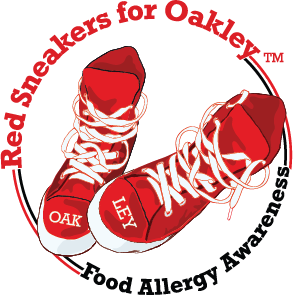How a Medical ID Could Save a Child’s Life
By Tara Cohen, Executive Vice President, Lauren’s Hope
As a parent to someone with food allergies, the thought of them going out into the world without your supervision can be stressful — or even scary.
The danger of food allergies has been well-documented. But the reality is that even the most careful person can experience an allergic reaction due to accidental cross contamination or ingestion. And for parents, how do you ensure that your child is adequately and appropriately cared for in the event of an allergic reaction outside of your supervision?
Furthermore, because allergic reactions can happen anywhere and at any time, we all know how essential it is for kids to have their emergency information and rescue medications readily accessible. This is where med IDs come in.
Allergy alert med IDs serve a few purposes:
They list your child's allergies, emergency action plan, and emergency contacts, helping first responders and trusted adults provide immediate, appropriate aid.
They help prevent complications that may be caused by typical emergency treatments. For instance, most IVs and even some kinds of surgical gloves are made with corn and corn byproducts. For a child with a corn allergy, having these items involved in their treatment can take a situation from bad to worse in an instant.
The best way to protect your child — whether you’re with them or not — is for them to wear a medical ID. Medical IDs are a convenient and simple way for your child to carry their most important medical information on them at all times. The benefits of wearing a medical ID are many:
Allergen Information for All to See: As a parent, you can’t possibly let every adult in your child’s life know what they’re allergic to. With a medical ID, your child can have that information available to prevent accidental exposure or ingestion.
Advocating for Themselves When They Cannot: In an instance where your child has had an allergic reaction, treatment needs to be administered quickly. But what if your child is scared? What if they can’t speak due to their allergic reaction? How will EMTs or adult supervision know what to do? A medical ID will let responders know exactly what your child is allergic to and what medication to administer.
Peace of Mind: Parents can’t be with their children every second of every day. With a medical ID, you’ll have greater peace of mind knowing that should an allergic reaction occur without you there, your child will be taken care of.
Typically, a medical ID consists of two parts: a bracelet and/or a necklace with a dog tag or pendant that’s been engraved with your child’s pertinent allergy information.
So, that begs the question: what should I engrave on my child’s medical ID? You’ll want to engrave the most pertinent information about your child and their allergies so proper treatment can be administered as quickly and appropriately as possible. Here’s what we recommend:
Name: Your child’s name is important for identification purposes.
Allergies: Include your child’s allergy or allergies so adults and/or first responders can act quickly.
Rescue Medications: What rescue medication does your child take? Where is it located? Should 911 immediately be called, or is the rescue medicine sufficient?
Emergency Contacts: What is your phone number? Who should be contacted in the event of an emergency?
The truth is, as parents, we’d love to be with our children all the time to protect them. But that’s not always possible. And for parents of children with food allergies, that can be a scary thought. With a medical ID, you’ll have that much more peace of mind knowing that in an emergency your child will still be advocated for. For more information on medical IDs and to find out which style is right for you, visit us at LaurensHope.com.
